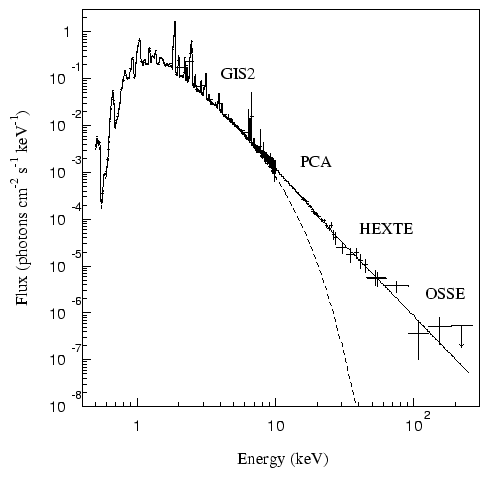Supernova Remnants
Virtually every paper published today incorporating X-ray observations of supernova remnants (SNRs) uses data from the HEASARC. The availability of X-ray images and spectra of numerous SNRs has facilitated synoptic studies as well as multifaceted studies of individual objects. These in turn have changed our perception of SNR evolution.One important class study is the work of Rho (1995 UMd PhD thesis), who used Einstein IPC and SSS, EXOSAT, ROSAT, and ASCA data to characterize a group of Galactic remnants which appear shell-like in the radio, but centrally filled with thermal X-rays. She demonstrated that many of these remnants form a distinct class, termed "mixed morphology" (MM) remnants, where the X-ray emitting gas indeed fills the interior of these remnants and that this gas is nearly isothermal. Further, these remnants are found in environments with high average interstellar density, which means they have a reservoir of material to fill their interiors. This work has stimulated a number of theoretical investigations, showing that these remnants evolve rapidly to the shell-forming stage in the dense environment (Chevalier 1999, ApJ 511, 798; Cox et al. 1999, ApJ 524, 179; Shelton et al. 1999, ApJ 524, 192).

Combined ASCA/RXTE/OSSE spectrum of Cas A from Allen et al. (1997).
Williams et al. (1999, ApJS 123, 467) have used the ROSAT PSPC and HRI archive to systematically study the structure and spectra of remnants in the Large Magellanic Cloud. They established a general evolutionary trend among the remnants in the sample. Among other findings this work supports the interpretation that the MM remnants are dynamically old, by showing that the MM SNRs in the LMC are among those with the largest diameters, and therefore among the most evolved.
One of the fundamental discoveries in all of high energy astrophysics in the past decade was the synchrotron signature of ~100 TeV electrons in SNR shells, and thus the first evidence for production of high-energy cosmic rays. Data from the HEASARC have been used in searches for cosmic ray emission. For instance, Allen et al. (1997, ApJ 487, L97) combined archival ASCA and OSSE data with public domain RXTE data to show that Cas A contains ~100 TeV electrons, making it the second SNR identified as a cosmic ray acceleration site. Keohane et al. (1997, ApJ 484, 350) combined ROSAT and ASCA data with radio data to find evidence for cosmic ray acceleration in IC 443. Keohane & Reynolds (1999, ApJ 525, 368) analyzed the ASCA spectra from a dozen Galactic remnants to place limits on the maximum energy to which electrons could be accelerated. This result shows that in most young remnants the electrons have not yet been accelerated to the energy at which synchrotron losses dominate.
Compared with the baseline of X-ray observations, the emission from SNRs varies slowly. Nevertheless, a combination of Einstein and ROSAT data have made possible a number of expansion rate studies. X-ray expansion rates have been published for Cas A (Koralesky et al. 1998, ApJ 505, L27; Vink et al. 1998, A&A 339, 201), Tycho (Hughes 1997, Proc. International Conf. on X-Ray Astronomy, 359), and Kepler (Hughes 1999, ApJ 527, 298; Fig. 7). In all these young remnants, the expansion rate measured in X-rays is substantially higher than that measured in the radio.

On the left is the ROSAT HRI image of Kepler and on the right a polar plot of the azimuthal expansion rate (Hughes 1999).
|
Normal Galaxies |
Science Introdution |
Isolated Neutron Stars & Pulsars |
